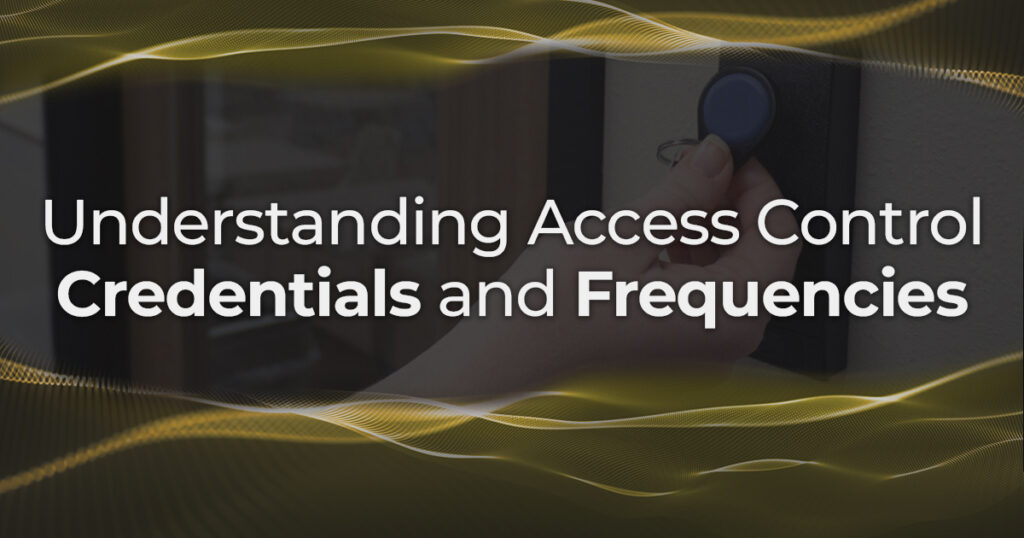Decoding the Symphony of Security: A Guide to Access Control Credentials and Frequencies
Modern access control systems are essential for ensuring the security of various facilities, meticulously verifying identities before granting entry to restricted areas and choosing the right credentials and frequencies is crucial. But this symphony of security relies on a crucial orchestra of components – the access control credentials and their corresponding frequencies. Understanding these instruments and their unique melodies is essential for composing a security strategy that perfectly balances protection with convenience.
In this blog post, we will explore different access control frequencies and their capabilities, providing you with the knowledge to make informed decisions for your security needs.

125 kHz EM RFID: The Traditional Standard
The 125 kHz EM RFID frequency is a widely used standard in access control systems. Renowned for its simplicity and reliability, this low-frequency technology operates at 125 kHz, making it a versatile choice for a variety of environments. EM RFID credentials are often used in key fobs and cards, providing a cost-effective solution for basic access control needs. These credentials work by emitting a unique identification code when brought near a compatible reader, allowing or denying access based on pre-configured permissions. Despite being a veteran technology, 125 kHz EM RFID remains popular due to its durability and ease of use, making it a mainstay in office buildings and residential complexes.

Prox T5577: Versatile and Adaptable
Sharing the stage with 125 kHz, the Prox T5577 chip offers a more dynamic performance. While operating at the same frequency as EM RFID, the T5577 boasts enhanced flexibility and functionality. Its programmable nature allows it to emulate different types of RFID tags, making it a true chameleon in the access control world. This adaptability makes Prox T5577 ideal for environments needing multiple credential types or frequent updates to access permissions. Whether housed in key fobs, cards, or other formats, Prox T5577 credentials provide a robust solution for complex access control systems. Additionally, their ability to store more data than standard EM RFID tags opens doors for advanced security features and customization options.

13.56 MHz Mifare™-Compatible 1K Classic: Advanced and Secure
For high-security environments, a higher frequency takes center stage. The 13.56 MHz Mifare™-Compatible 1K Classic represents a significant leap forward in access control technology. Operating at a higher frequency than its 125 kHz counterparts, the 13.56 MHz Mifare™ offers enhanced security and faster data transfer rates. These advanced credentials are widely used in security-conscious settings like corporate offices, educational institutions, and government buildings. The 1K Classic chip boasts 1 kilobyte of memory, enabling more complex data storage and robust encryption capabilities. This translates to a heightened level of security, ideal for applications requiring strict access control and the integration of additional services such as cashless payments or transportation passes.
Making the Right Choice for Your Security Needs
Understanding the differences between access control frequencies and their capabilities is essential for selecting the right solution for your security needs. The 125 kHz EM RFID offers a reliable and cost-effective option for basic access control, while the Prox T5577 provides enhanced versatility and adaptability. For those requiring advanced security features and faster data transfer, the 13.56 MHz Mifare™-Compatible 1K Classic is the ideal choice. By evaluating the specific requirements of your environment and considering the strengths of each frequency, you can ensure optimal security and convenience for your access control system. Choose wisely to protect your assets and maintain a secure and efficient facility.





